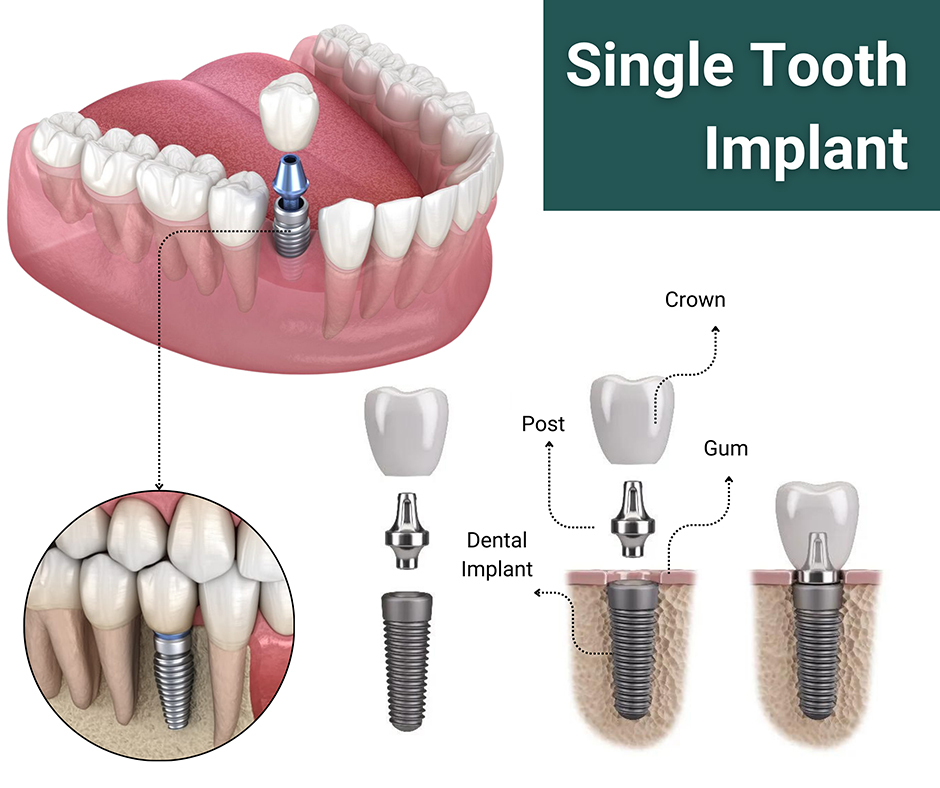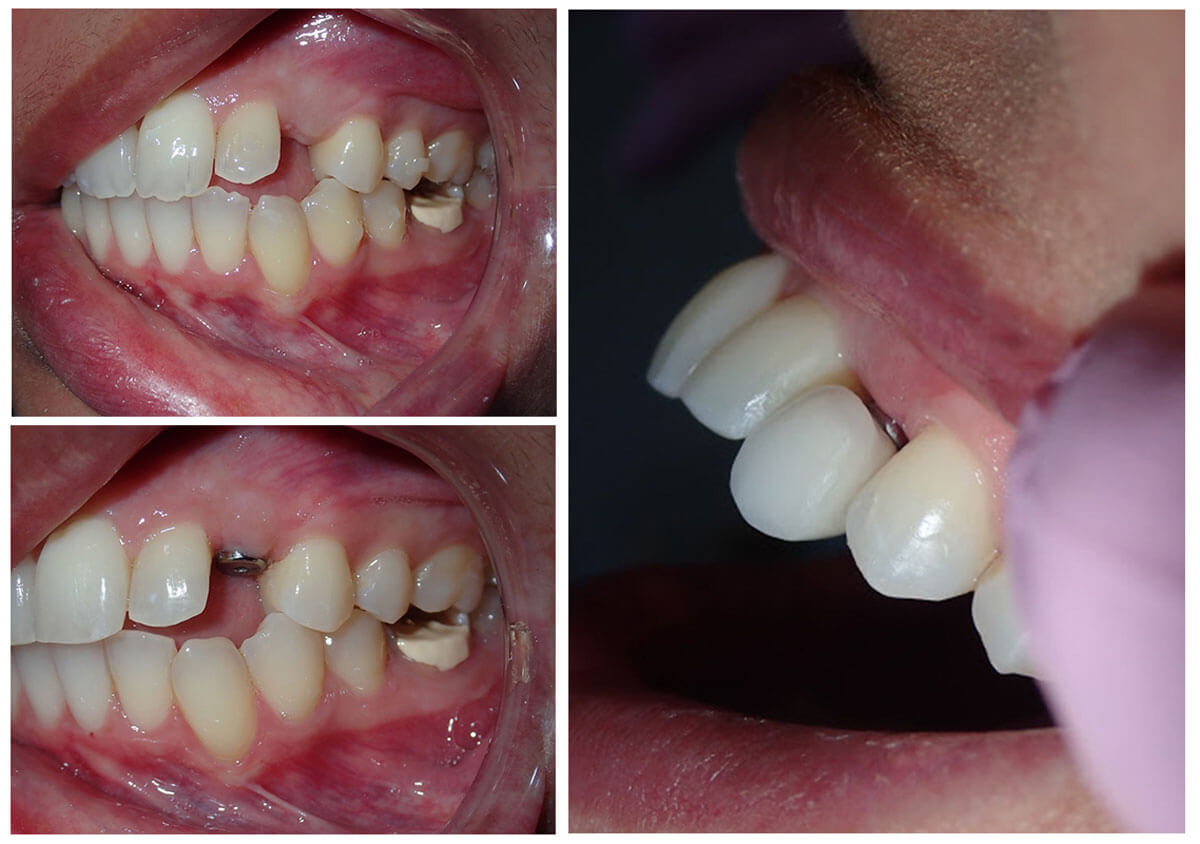Facts About Dental Implants Revealed
Facts About Dental Implants Revealed
Blog Article
The Best Guide To Dental Implants
Table of ContentsThe 4-Minute Rule for Dental ImplantsA Biased View of Dental ImplantsAn Unbiased View of Dental ImplantsThe Basic Principles Of Dental Implants
are clinical devices surgically dental implanted right into the jaw to recover a person's capability to eat or their look. They offer assistance for man-made (phony) teeth, such as crowns, bridges, or dentures. When a tooth is lost due to injury or disease, a person can experience issues such as quick bone loss, faulty speech, or adjustments to chewing patterns that result in discomfort.
Structure of The Oral Implant System choosing oral implants, speak to your dental service provider about the possible advantages and risks, and whether you are a prospect for the procedure. Points to think about: Your general health is a crucial consider determining whether you are an excellent candidate for oral implants, how much time it will certainly take to heal, and just how long the dental implant may remain in location.
Smoking might affect the recovery process and lower the long-term success of the implant. The healing procedure for the implant body might take a number of months or longer, during which time you usually have a short-term abutment in area of the tooth. the dental implant treatment: Thoroughly adhere to the oral hygiene directions offered to you by your oral supplier.
Everything about Dental Implants
Implant failing can cause the demand for another surgical procedure to take care of or change the dental implant system. Brings back the capacity to eat Restores aesthetic appearance Aids maintain the jawbone from shrinking as a result of bone loss Protects the wellness of the bordering bone and periodontals Assists maintain surrounding (neighboring) teeth secure Boosts top quality of life Damage to surrounding all-natural teeth throughout dental implant positioning Injury to the surrounding cells during surgical procedure, such as sinus opening Injury during surgical procedure (as an example, crack of bordering jawbone) Insufficient feature, such as seeming like the teeth do not bite with each other generally A sensation that the tooth is loose or turning in area resulting from an abutment screw loosening Implant body failure (looseness of the dental implant body) as a result of systemic infection, which may be most likely in clients with uncontrolled diabetics issues because of regional infection in bone and gums supporting like this the dental implant body because of delayed recovery, which may be most likely in patients that smoke Problem cleaning the periodontals around the implant, causing bad dental health Untreated gum illness Post-surgical pins and needles because of nerve impingement or damage Constantly notify healthcare providers and imaging professionals that you have dental implants prior to any type of magnetic vibration imaging (MRI) or x-ray procedures.
FDA is not knowledgeable about any unfavorable occasions reported for MRI or x-ray procedures with oral implants. Oral implants systems are normally made from products that follow worldwide agreement criteria of the International Organization for Standardization (ISO) or ASTM International. These requirements have information of what makes a safe material.
Various other products such as gold alloys, cobalt-based alloys, titanium alloys, or ceramic products are occasionally used. The security accounts of these products are widely known. Oral dental implant systems are evaluated according to worldwide agreement criteria. Biocompatibility testing, to show that bodily contact with the device does not cause problems like irritability or allergy, is part of the analysis that aids ensure the products in the oral implant system are safe and do not trigger unfavorable impacts when implanted in people.

The Only Guide for Dental Implants
Some individuals are not eligible for dental implant surgical over at this website treatment. It is for dental doctors to run on individuals with: intense illnessuncontrollable metabolic diseasebone or soft cells illness or infectionIf these problems are solved, an individual can have the surgical treatment. Dental Implants. In, oral doctors avoid from operating on people with: If people with any one of the above undergo dental implant surgical treatment, there is a greater risk of the dental implant stopping working
Some people have a jawbone irregularity that prevents sufficient bone for an implant from creating. The doctor will after that use a bone or bone replacement to repair and build up the location.
Oral implant surgical procedure is a customized procedure. It's not the very same for everyone. However the adhering to gives a general introduction of what you can expect your dental practitioner, dental cosmetic surgeon, periodontist or prosthodontist to do: Position the dental implant operatively. Offer you time to heal. Attach the post and last crown, bridge or denture.
Next off, your surgeon will thoroughly position the dental implant into your jaw. If your implant is near the front of your mouth, your dental expert will make a short-lived tooth for you to use up until you recover.
Excitement About Dental Implants
Your service provider can inform you what to anticipate in your situation. During the recovery stage, your jawbone must fuse to the dental implant. This process, called osseointegration, is important for security and long-term success. This process can take anywhere from three to nine months. In some instances, it may take longer.
As soon as your dental implant heals, your dental practitioner can affix the joint (tiny port post) and your last reconstruction (crown, bridge or denture). This normally takes regarding one hour to finish and might require a 2nd small surgical treatment. You should not feel any kind of pain throughout your oral implant procedure since Going Here your company will certainly utilize medication to numb your gums.
Report this page